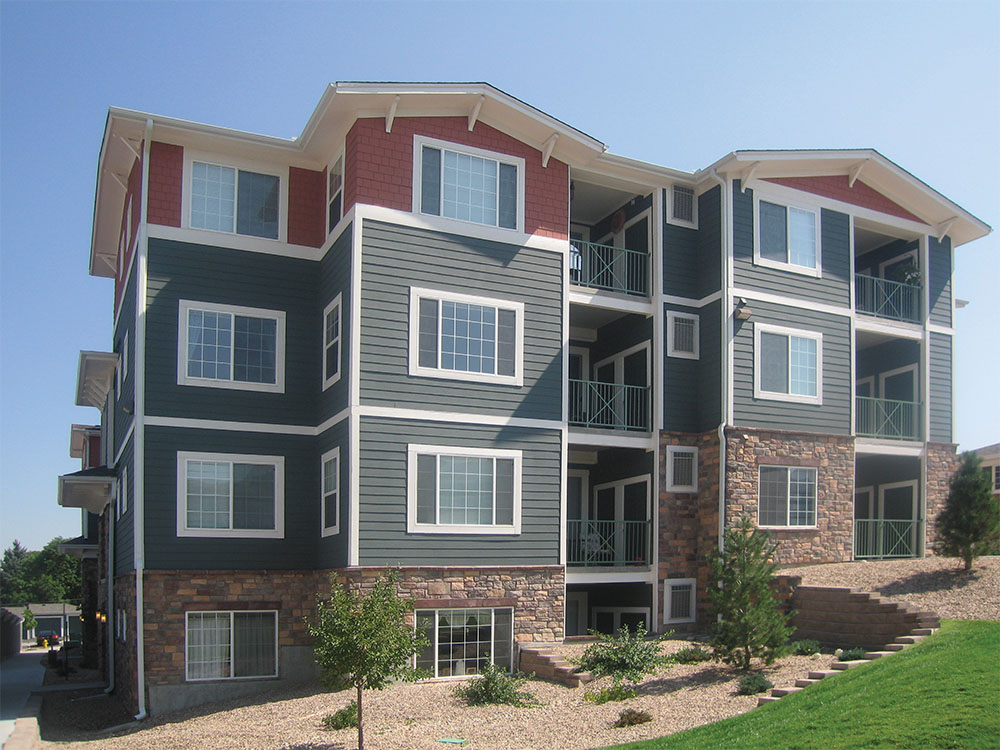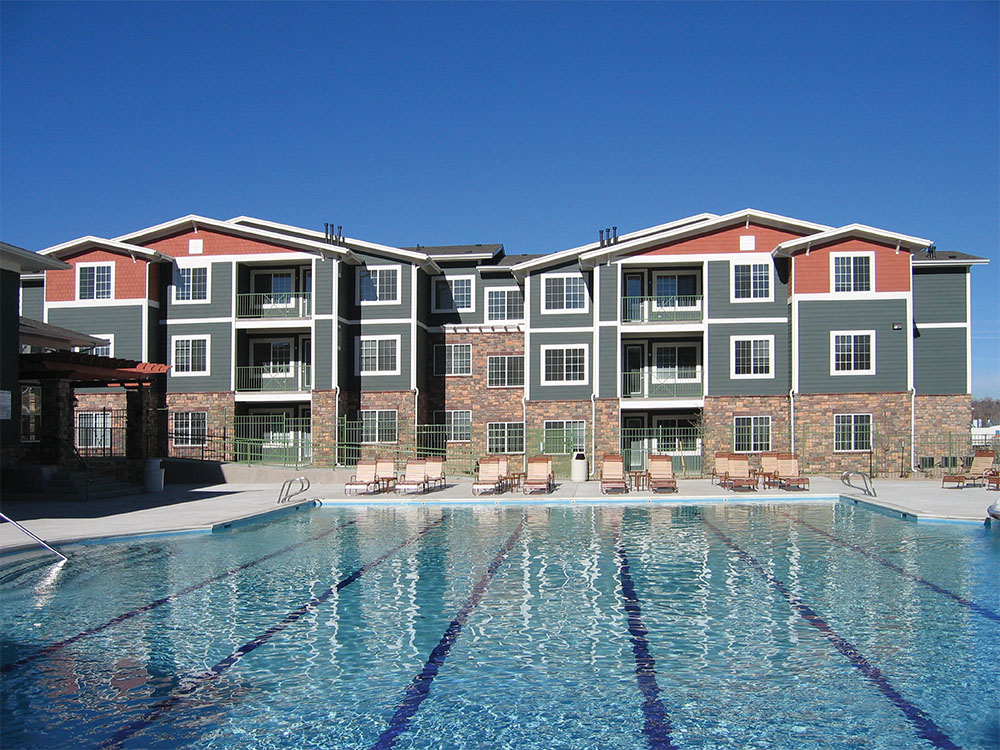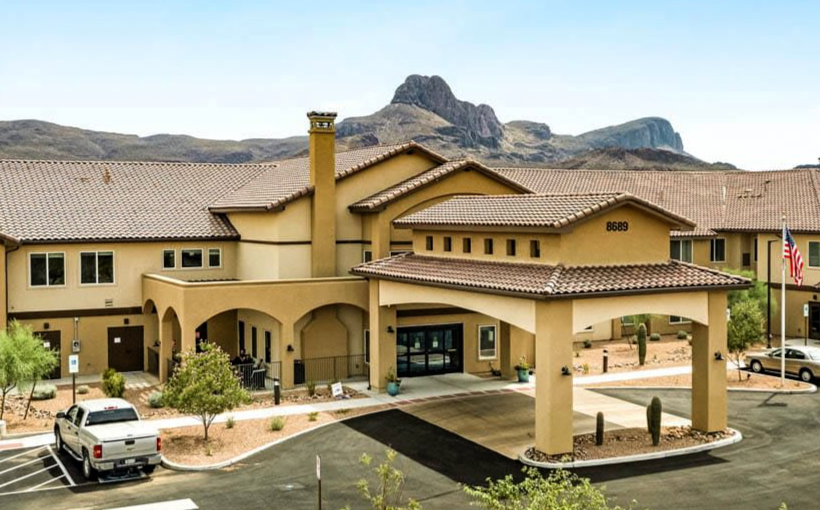The Emerging Trends in Real Estate 2010 by PricewaterhouseCoopers lists Colorado’s capital as one of the top 10 national cities to watch—the third year in a row the report has highlighted Denver among top-tier cities, pointing to the fact that the city avoided the financial industry implosions of other metros and is a national hub for alternative energy, wind farm manufacturing, and oil and natural gas companies.
Like most metros around the country, the Rocky Mountain State’s most populous city experienced record low sales volume last year. The total of 94 apartment properties that traded hands in the Denver area last year—only eight with more than 200 units—represents the lowest number of annual apartment sales in the Metro in 16 years.
“Due to the increasing cap rates and a soft rental market, most owners chose not to sell their apartment properties during 2009,” said Jeff Hawks, principal at Apartment Realty Advisors in Denver, who, along with his partner Doug Andrews, received 119 offers from 72 different buyers last year, but closed only two transactions.
“In the last 24 months, we had $1 billion in listings in Colorado that did not sell because the seller chose not to sell. We had at least 10 offers per property and sometimes over 20 and the buyer could not get to the price that the seller was willing to take.” said Hawks, who expects a similar scenario this year.

According to Loop Net, $259 million worth of apartment property sales closed during the first three quarters of 2009, down from $987 million for the same period in 2008. Except for a couple of off-market distress sales, none of the communities that sold last year were built before 1980 and not one was sold by a private party.
The highest dollar transaction in the Denver metro last year closed in December when RREEF sold the seven-year-old, 415-unit Metro Apartments in downtown Denver to CB Richard Ellis Investors LLC for $55 million, or $132,500 per unit. RREEF paid $75 million for the property just three years ago, according to Denver County property records.
In the second largest transaction in the area last year, local investor Asher Investments Inc. beat out eight other bidders for the 264-unit Jefferson at Arvada Ridge in Arvada, paying $28.5 million for the four-year-old community that was 90 percent occupied at the time of the sale. Hawks and Andrews represented the seller, Irving, Texas-based JPI Multifamily Partners, which had acquired the community from Milestone Apartment Developers LLC in 2007 for $35 million. The cap rate was 6.86 percent at time of closing. Asher financed the purchase by assuming $26,437,539 in HUD 221(d)(4) debt with an interest rate of 5.78 percent.
Jefferson at Arvada Ridge consists of one, two- and three-bedroom upscale units with multiple floor plans that range from 722 to 1,242 sq. ft. and features that include island kitchens, vaulted ceiling and walk-in closets in select units. Rents average $1.05 per sq. ft. Community amenities include a swimming pool, fitness center, clubhouse and billiards room. The property is located less than one mile north of the future Arvada Ridge Station that will be part of the metro Denver Light Rail system’s FasTracks Gold Line Corridor when it is completed in 2016.
“JPI and its equity partner created a venture several years ago with stated investment objectives. Like so many other national investment partnerships that invested in 2006 and 2007, the circumstances changed in 2008. Based on new market conditions, JPI and its partner decided to sell Jefferson at Arvada sooner than they anticipated,” said Hawks.
Other sellers were the usual REIT suspects, including Equity Residential and AIMCO, each of which sold a couple of assets in Denver last year. “Equity is moving up and out of 80s product into newer product and AIMCO sold a couple because they also wanted to get rid of their old stuff and buy new. I don’t see much of that happening in 2010 for Denver, however, and right now, I have the only listing over 200 units in the entire state of Colorado,” said Hawks.
Another interesting anomaly in last year’s transaction scenario is that not one new apartment asset in Denver changed hands. “Generally speaking, every apartment building under construction today in the United States is not worth the debt on the property. Most of the new apartment properties in lease-up have not met the rent expectations underwritten prior to their development. We have seen many examples of new apartments that expected $1.20 to $1.30 rents but are being leased-up at below $1.10 rents. This decrease in income along with the increase in cap rates and the lack of institutional buyers has made it almost impossible for developers to sell new apartment properties in any market,” said Hawks.
In addition to the lack of sales, another element of the story for 2009 has been the significant recovery of the metro Denver apartment market, a recovery that Hawks says has been overlooked by the press. The local press was unkind to Denver last year, pointing out that the vacancy rate for metro Denver apartment properties reached nine percent during the second quarter of 2009, the highest rate the city has seen since 2005, and Marcus & Millichap predicts the addition of new multifamily stock will push vacancies another 40 basis points this year.
The metro Denver apartment market achieved an occupancy level of 94.1 percent but fell to 91 percent in the second quarter. “We anticipated that occupancy would stay soft until the economy started to significantly recover. Much to our surprise we found that in Q3 2009 the market had significant absorption of apartment units, absorbing 6,010 units, the largest absorption of any quarter since AAMD, The Apartment Rent and Vacancy Study by Dr. Gordon Von Stroh of the University of Denver and sponsored by the Apartment Association of Metro Denver. began tracking this statistic in 1980. “With this absorption, occupancy rebounded to 92.6 percent, which was one of the largest recoveries of any metropolitan area in the United States,” said Hawks.

And Hawks says vacancy is only half the story. Market rents in Q2 2009 dropped to $1.02 from $1.03 in the previous quarter, while concessions increased only 10 basis points to 7.9 percent. One year ago, market rents were $1.04 and concessions were 12.1 percent.
“We have never seen rents drop so little in the face of a 300 basis point increase in vacancy. One reason for this is that nearly all of the additional vacancy is in older product built during the 1980s. The press talks about Denver being 92 percent occupied, but the newer properties built in the last 15 years are almost all 94 or 95 percent occupied and that bodes well to be able to raise some rents by the end of this year.” he said.
Marcus & Millichap predicts that the expected modest rise in vacancies this year will be concentrated mostly in the eastern part of the metro and muted in the city, where very little new product is delivering. Apartment Realty Advisors disagrees. “I see all sub-markets increasing in occupancy in 2010,” said Hawks. “Our crystal ball sees the metro Denver apartment market ending this year at between 94 and 95 percent occupancy.”
“Most metro Denver apartment owners are bringing in significantly more rent today than they have in the past. “The truth is, while there are more vacant units in metro Denver today than last year and the market delivered 3,791 units in 2009, renters today are paying effective rents that are nearly six percent higher than in 2007 and 11 percent higher than in 2005. And, a national research firm recently ranked Denver among the top five of all major U.S. cities for two- and five-year rent growth for apartments,” he said.
Denver also did not have the big job losses because it didn’t have the big financial centers and some of the other industries that really took a hit in the Great Recession. “I think we lost 40,000 jobs, which is bad, but nowhere near what is happening around the country. So I think we will recover faster than most markets in the nation,” said Hawks.














